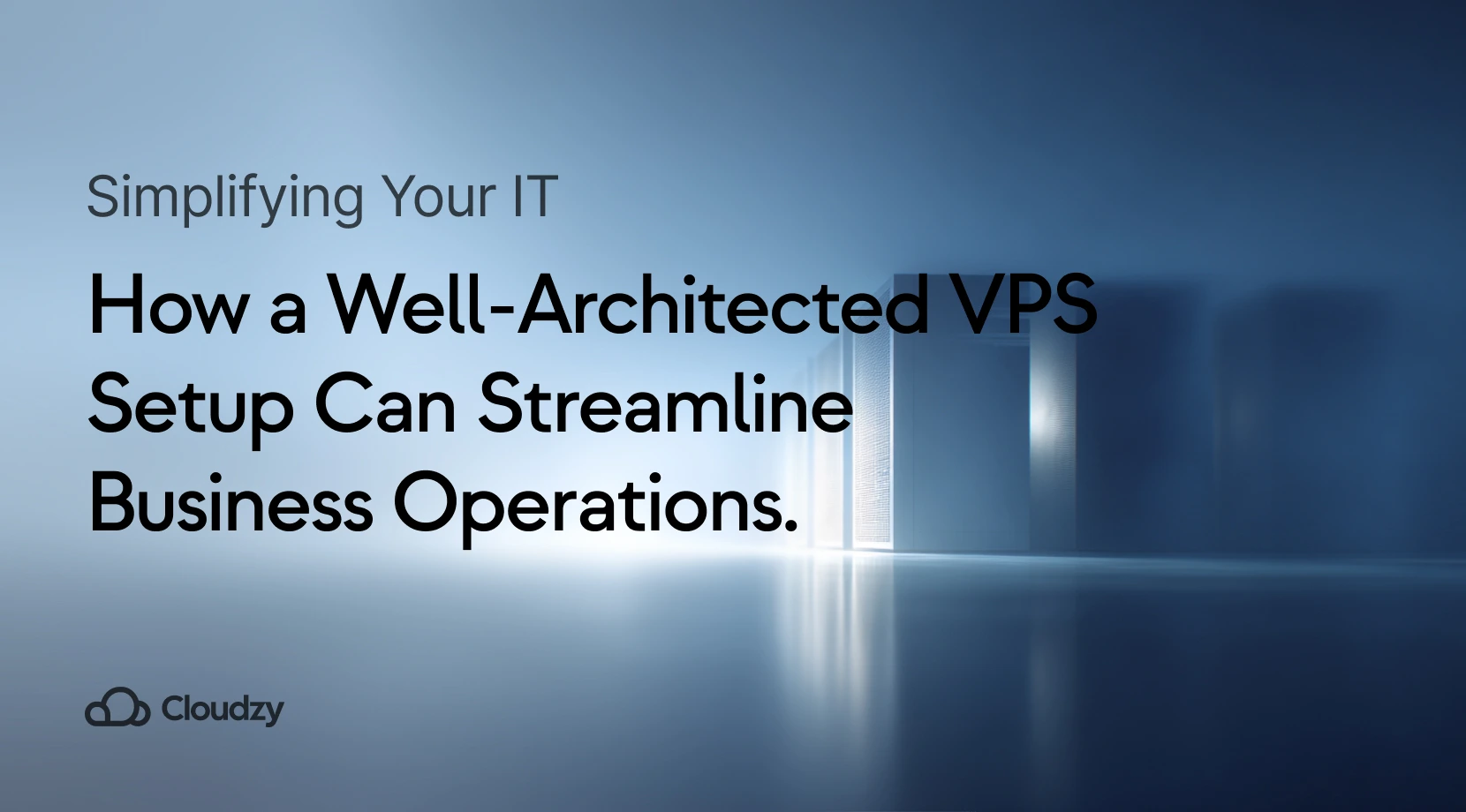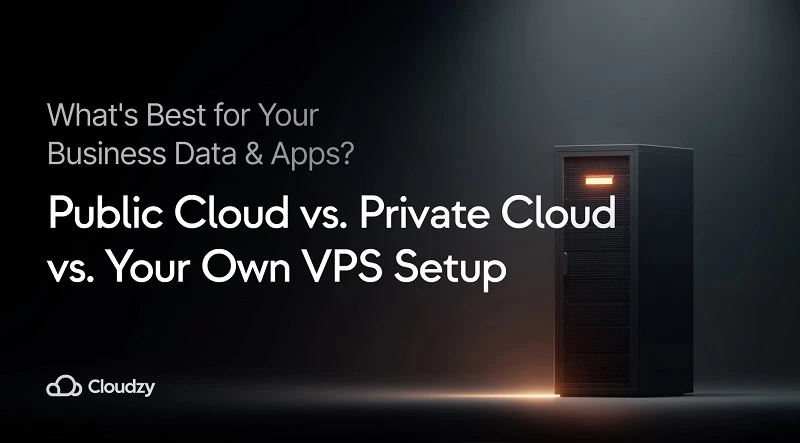Running a small or midsize company means wearing more hats than the average IT department keeps in storage; many owners wrestle with patch schedules, backups, and network hiccups before breakfast. The good news is that streamlined business IT with VPS can give you that spare hand, letting you focus on sales, service, and staff rather than servers. With an efficient VPS configuration for SMB teams, you can carve out resources, avoid capital expenses, and finally catch your breath.
By centering your plans on streamlined business IT with VPS, you stop firefighting and start planning. You can map each workload to its own node, keep sensitive data in separated storage, and keep nights free from unplanned outages. When you also commit to reliable VPS for business processes, you remove the randomness that keeps budgets unpredictable.
Is Your Business IT More Complicated Than It Needs to Be?
Many teams juggle three operating systems, five backup utilities, and a maze of shared folders. This jumble grows until nobody remembers why a particular port is open. If that sounds familiar, you are a prime candidate for streamlined business IT with VPS.
Common Pain Points
- Shadow IT born from inpatient staff
- Patch cycles that never finish
- Costs that spike without warning
- Security gaps hiding between workloads
What “Well‑Architected” Means for Your VPS & Business
Cloud architects talk about pillars such as reliability, cost optimization, and operational excellence. For a business owner, these pillars translate to predictable invoices, peaceful weekends, and fewer support tickets. A streamlined business IT with a VPS approach maps each pillar to a clear action:
- Reliability → Separate production and testing workloads on different virtual machines.
- Cost management → Turn off idle instances rather than paying for silence.
- Operational excellence → Apply automation to patching, monitoring, and reporting.
When combined with an efficient VPS configuration for SMB customers, these actions reduce the daily grind and build a culture of IT simplification. To learn more, check out our comprehensive guide on cloud architecture.
Tip 1: Dedicate VPS for Specific Business Functions
One of the easiest ways to reach streamlined business IT with VPS status is to stop stacking unrelated services on the same machine. Place your accounting stack in its own private cloud segment, keep marketing tools on a separate node, and reserve one quiet instance for payroll.
Benefits of a single‑purpose VPS
- Clear performance baselines make troubleshooting painless
- Compartmentalized data tightens compliance scopes
- Maintenance windows shorten because fewer moving parts collide
When each instance is tuned as a reliable VPS for business processes, your team notices smoother logins, faster reports, and fewer “just reboot it” moments.
Pro tip: Document naming conventions; “acct‑prod‑01” beats “server3” every time.
Tip 2: Standardize Your Setups for Easier Management
Pet servers invite trouble. A herd of cattle‑style instances, built from one template, invites calm mornings. The shift to templates is at the heart of streamlined business IT with VPS thinking; it also helps you simplify IT management with VPS images that anyone on the team can understand.
Before we jump into the how, look at the difference:
| Aspect | Generic DIY VPS | Cloudzy Standard Environment |
| Storage medium | Mixed HDD/SSD, varied speeds | 100 % NVMe SSD across 15+ global data centers |
| Network throughput | Shared 1 Gbps at best | Up to 10 Gbps uplink (dedicated) |
| Uptime promise | Guesswork | 99.95 % SLA (less than 22 min downtime per month) |
| Snapshots & backups | Manual, extra cost | Three daily snapshots plus weekly off‑site backups included |
| Patch cadence | Admin‑driven, inconsistent | Weekly automated updates pushed from Cloudzy dashboard |
| Monitoring & alerts | Third‑party add‑on scripts | Built‑in real‑time metrics and proactive alerts |
Every time you rebuild from the golden image, you take one more step toward streamlined business IT with VPSperfection.
Steps to Build Your Template
- Start with the latest distribution image, then strip packages you do not need.
- Install baseline agents: logging, cloud security tools, and monitoring.
- Lock down SSH, set time sync, and capture the image.
- Document version numbers so an efficient VPS configuration for SMB rollout remains repeatable.
Tip 3: Automate Routine Tasks (Backups, Updates)
Nobody signs up for night‑shift patch duty voluntarily. Automation leaves the dull work to scripts, not humans, and moves you closer to streamlined business IT with VPS living. Scheduled snapshots, configuration management runs, and rolling kernel updates sharpen resilience while you sleep.
Key routines to automate and monitor:
- Daily off‑site backups pushed to object storage
- Weekly package updates tested on staging first
- Continuous log harvesting into an SIEM powered by cloud infrastructure security best practices
When you simplify IT management with VPS automation, you gain predictable outcomes and can promise a reliable VPS for business processes without fingers crossed.
The Goal: IT That Supports, Not Hinders, Your Business
Tools should stay out of the way so people can shine. By stacking these tips, you establish streamlined business IT with VPS foundations that free capital, reduce downtime, and keep auditors satisfied. Fewer click‑through screens mean more coffee with customers and fewer emergency calls.
Checklist for an IT environment that helps rather than hinders
- Dedicated, purpose‑built instances
- A shared template and versioning log
- Automatic backups with verified restores
- A security baseline proven by periodic scans
The payoff is clear: happier staff, tighter numbers, and an architecture ready for growth.
Measuring the Payoff
Moving from a grab‑bag of servers to a unified platform is not just a feel‑good exercise; it is a numbers game. Track mean‑time‑to‑recover before and after your shift, then compare monthly infrastructure bills. Most owners I talk to record a double‑digit drop in outages and a spiral‑shaped cost curve that flattens rather than rises. Document each improvement, share it during quarter‑end reviews, and use the evidence to justify next year’s budget request.
Working with a VPS Provider for a Simpler IT Life
You can build everything yourself, yet partnering wisely accelerates the path to streamlined business IT with VPS. A provider that offers a ready‑to‑use cloud server takes care of hardware, networking, and proactive maintenance, so you can focus on product launches rather than disk failures.
What to Expect from a Good Partner
- High‑availability nodes delivering a reliable VPS for business processes every day
- Human support that explains instead of lecturing
- Straightforward pricing that matches an efficient VPS configuration for SMB budget
- SLA‑backed uptime, backed by automatic monitoring
I like providers that invite me into their dashboard, share metrics openly, and help me simplify IT management with VPS even further.
Choosing the Right Plan
Not every workload needs the same horsepower. Reserve high‑CPU nodes for analytics, memory‑optimized instances for in‑memory databases, and general‑purpose slices for front‑end sites. Bundling the mix under one contract gives you volume discounts and a clear roadmap should traffic surge. Ask your provider about burst credit policies, snapshot fees, and data‑center proximity to your customers; small details shape user experience. A partner who speaks plainly about these topics makes it easier to run lean.
In many teams, the missing piece is safe access for traveling staff and branch offices. Cloudzy VPN folds into the same dashboard as your VPS fleet, encrypts every session, and keeps auditors calm. Role‑based rules decide which database or file share each user sees, and the service maintains a strict no‑log stance. When more horsepower is needed, you can simply buy VPS slices that inherit the same policies, avoiding yet another tool to learn.
Final Thoughts
Complexity feeds on silence, and nobody benefits when servers hog your calendar. Adopting streamlined business IT with VPS principles—dedication, standardization, and automation—cuts that complexity down to size. Pair those principles with an efficient VPS configuration for SMB, keep your scripts tidy, and enjoy the peace that comes from a reliable VPS for business processes. With repeatable templates, scheduled snapshots, and a supportive partner, streamlined business IT with VPS is not something reserved for the Fortune 500; it is ready for you today.



